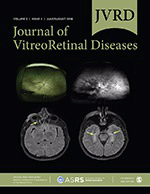
Journal of Innovative Optical Health Sciences
metrics 2024
Illuminating Pathways in Optical Health Sciences
Introduction
Welcome to the Journal of Innovative Optical Health Sciences, an esteemed platform dedicated to the interdisciplinary exploration of optical technologies in health sciences. Published by World Scientific Publishing Co Pte Ltd, this open-access journal has been at the forefront of innovation since its inception in 2008, facilitating vital discussions and research advancements. With a notable impact factor and a commendable ranking in various scientific categories—including Q2 in Atomic and Molecular Physics, Q3 in Biomedical Engineering, and Q3 in Medicine (miscellaneous)—the journal serves as an essential resource for researchers, professionals, and students alike. Hailing from Singapore, we aim to bridge the gap between optical science and healthcare, promoting breakthroughs that enhance patient care and medical practices. Explore our diverse collection of studies and join a vibrant community committed to advancing knowledge in this cutting-edge field.
Metrics 2024
 0.49
0.49 2.30
2.30 2.20
2.20 31
31Metrics History
Rank 2024
Scopus
IF (Web Of Science)
JCI (Web Of Science)
Quartile History
Similar Journals

MOLECULAR VISION
Transforming knowledge into vision-enhancing solutions.MOLECULAR VISION is a premier open-access journal that has been advancing the field of ophthalmology since its inception in 1995. Published by MOLECULAR VISION, this journal boasts a strong reputation, currently ranking in the second quartile (Q2) of its category, with a Scopus ranking of 35 out of 137, placing it in the 74th percentile among peer publications. Dedicated to disseminating groundbreaking research and innovative findings in the study of vision and ocular health, MOLECULAR VISION serves as a vital resource for researchers, healthcare professionals, and students engaged in this dynamic field. The journal welcomes contributions spanning fundamental and clinical research, offering a platform for crucial knowledge exchange that is essential for advancing ocular health and function. With its commitment to open access, readers around the globe can freely access and build upon the wealth of information disseminated through its pages, ensuring that the latest developments in ophthalmology are available to all.

Journal of Optics
Empowering Discoveries in the World of LightThe Journal of Optics, published by IOP Publishing Ltd, stands as a pivotal platform for disseminating cutting-edge research in the fields of atomic, molecular physics, and optics as well as electronic, optical, and magnetic materials. With an impact factor reflective of its esteemed position—ranking in the 60th percentile in both relevant Scopus categories—this journal, boasting an ISSN of 2040-8978 and an E-ISSN of 2040-8986, is uniquely positioned to foster innovation and collaboration among researchers, professionals, and students worldwide. Located in the United Kingdom and operational since 2010, the journal embraces an open access model, promoting maximal reach and engagement with the latest discoveries that shape the future of optics. As it continues to evolve through its converged years up to 2024, the Journal of Optics remains a critical resource for those seeking to advance their knowledge and influence in this dynamic field.

BioChip Journal
Exploring the Frontiers of Biochip Technology and ApplicationsBioChip Journal, published by the Korean Biochip Society (KBCS), is a renowned academic platform dedicated to advancing the fields of bioengineering, biomedical engineering, biotechnology, and electrical and electronic engineering. With its ISSN 1976-0280 and E-ISSN 2092-7843, this esteemed journal has established itself as a valuable resource for researchers, professionals, and students alike, providing them with cutting-edge research and insights since its inception in 2008. The journal has earned a commendable standing in the academic community, achieving Q2 ranking across key categories, thereby placing it amongst the top-tier publications. With its impressive Scopus rankings, including a top 10% position in Electrical and Electronic Engineering and a strong showing in both Biomedical Engineering and Biotechnology, BioChip Journal plays a vital role in disseminating innovative biochip technologies and applications. The journal continues to invite groundbreaking studies and reviews that promote the interdisciplinary collaboration essential for the future of biochip research, ultimately contributing to advancements in healthcare, diagnostics, and therapeutics.

Journal of VitreoRetinal Diseases
Exploring breakthroughs in retinal disease research.Journal of VitreoRetinal Diseases is a leading publication in the field of ophthalmology, specifically focusing on the complex landscape of vitreo-retinal conditions. Released by SAGE Publications Inc, this journal plays a crucial role in advancing the understanding and treatment of retinal diseases through high-quality, peer-reviewed research. With an ISSN of 2474-1264 and an E-ISSN of 2474-1272, the journal has gained recognition since its inception in 2017, currently ranking in the Q3 category of ophthalmology based on its Scopus metrics. Positioned within the 31st percentile among its peers, the journal provides a platform for the dissemination of innovative findings and clinical practices. Although it operates under a traditional access model, the significance of its contributions is profound, making it an essential resource for researchers, healthcare professionals, and students dedicated to improving patient outcomes in retinal health.

Computer Optics
Illuminating Research at the Crossroads of Optics and ITComputer Optics is a prominent academic journal dedicated to advancing the field of optics and its integration with computer science, published by the IMAGE PROCESSING SYSTEMS INST of the Russian Academy of Sciences. With an ISSN of 0134-2452 and an E-ISSN of 2412-6179, this journal has been a vital resource for researchers and professionals since it became Open Access in 1987, promoting the free dissemination of knowledge. Based in Samara, Russia, Computer Optics covers a broad range of relevant topics, with its scope spanning atomic and molecular physics, optics, computer vision, and electrical engineering. Although characterized within Q4 and Q3 quartiles in various categories in 2023, its rigorous peer-review process ensures the publication of high-quality research contributions. The journal is crucial for those wishing to explore interdisciplinary approaches that merge practical applications of optics with cutting-edge computer technologies, thereby acting as a bridge between these dynamic fields.

JOURNAL OF BIOMEDICAL OPTICS
Unlocking New Frontiers in Biomedical OpticsJOURNAL OF BIOMEDICAL OPTICS, published by SPIE-SOC PHOTO-OPTICAL INSTRUMENTATION ENGINEERS, is a premier Open Access journal that has been at the forefront of research in the fields of optical engineering and biomedical applications since its inception in 1996. With an impressive range of studies that span atomic and molecular physics, biomedical engineering, and biomaterials, this journal is consistently recognized for its high-quality publications, evidenced by its Q1 quartile ranking in 2023 for Atomic and Molecular Physics and Optics. The journal’s impact is further validated by its Scopus rankings, placing it in the top 30% of its categories. Designed to facilitate rapid dissemination of innovative advancements in biomedical optics, this journal promotes an interdisciplinary approach, making it an essential resource for researchers, professionals, and students aiming to advance their knowledge and applications of optical technologies in medicine. The journal is committed to broadening access to groundbreaking research, having transitioned to Open Access in 2019, ensuring that the latest findings are available to a global audience.

Current Optics and Photonics
Exploring Innovations in Optical SciencesCurrent Optics and Photonics is a premier journal published by the Optical Society Korea, focusing on the dynamic and evolving fields of optics and photonics. With an ISSN of 2508-7266 and E-ISSN 2508-7274, it provides a comprehensive platform for scholarly communication, emphasizing innovations, advances in technology, and theoretical developments in atomic and molecular physics and optics. Situated in South Korea's vibrant academic landscape, this open access journal aims to bridge the gap between theoretical research and practical applications, fostering collaboration and knowledge sharing among researchers, professionals, and students alike. Although currently ranked in the Q3 category for both Atomic and Molecular Physics and Optics, with a Scopus rank of #183/224, it showcases significant contributions that enhance understanding in these critical areas. The journal encourages submission of original research articles, reviews, and technical notes, with the objective of driving forward the conversation in optics and photonics throughout its converged years from 2017 to 2024. Embrace the opportunity to contribute to this expanding field and become part of a community that is at the forefront of scientific discovery.

Translational Vision Science & Technology
Unlocking the Potential of Ophthalmological InnovationTranslational Vision Science & Technology is a premier open access journal dedicated to the advancement of the field of ophthalmology and biomedical engineering. Published by the Association for Research in Vision and Ophthalmology, Inc., this journal has established itself as a leading source of high-quality research since its inception in 2013, achieving a remarkable impact factor reflective of its influential contribution to the field. With an impressive ranking of #21 in Ophthalmology and #120 in Biomedical Engineering within the Scopus database, it sits within the prestigious Q1 quartile for both categories as of 2023, further validating its significance. The journal's scope encompasses a wide variety of topics focused on the intersection of ophthalmological science and technological innovation, welcoming contributions that promote the understanding and treatment of visual disorders. Available as an Open Access publication since 2016, it ensures that cutting-edge research is freely accessible to researchers, practitioners, and students worldwide, facilitating the rapid dissemination of knowledge essential for the advancement of vision science.

Eye and Vision
Connecting global minds in the pursuit of vision advancements.Eye and Vision, published by BMC, is a leading open-access journal dedicated to the dynamic field of ophthalmology and visual sciences. With its ISSN 2326-0246 and E-ISSN 2326-0254, the journal has established itself as a premier platform for innovative research and clinical studies, achieving impressive rankings in 2023 as Q1 in both Health Professions (Miscellaneous) and Ophthalmology categories. The journal's commitment to accessible knowledge since its transition to open access in 2015 enhances its global reach, allowing researchers, clinicians, and students to share and access top-tier studies and advancements in the field. Located in the United Kingdom and delivering influential insights from 2014 through to 2024, Eye and Vision holds significant relevance, with a Scopus ranking placing it in the 99th percentile for Health Professions and the 93rd percentile for Ophthalmology, making it an essential resource for those looking to stay at the forefront of eye research and vision science.

International Journal of Optomechatronics
Transforming ideas into reality in optomechatronic science.The International Journal of Optomechatronics, published by Taylor & Francis Inc, is a leading peer-reviewed journal dedicated to the convergence of optics, mechanics, and electronics. With an ISSN of 1559-9612 and an E-ISSN of 1559-9620, this esteemed journal has been at the forefront of research in Electrical and Electronic Engineering, Instrumentation, and Mechanical Engineering since its inception in 2007. Its exceptional reputation is reflected in its Q1 rankings across multiple categories as of 2023, positioning it among the top-tier journals in the field. As an open access publication since 2017, it encourages wide dissemination of innovative research and technological advancements. With impactful contributions that span applications in robotics, control systems, and advanced manufacturing, the journal serves as a vital resource for researchers, professionals, and students aiming to remain at the cutting edge of optomechatronic science and engineering.